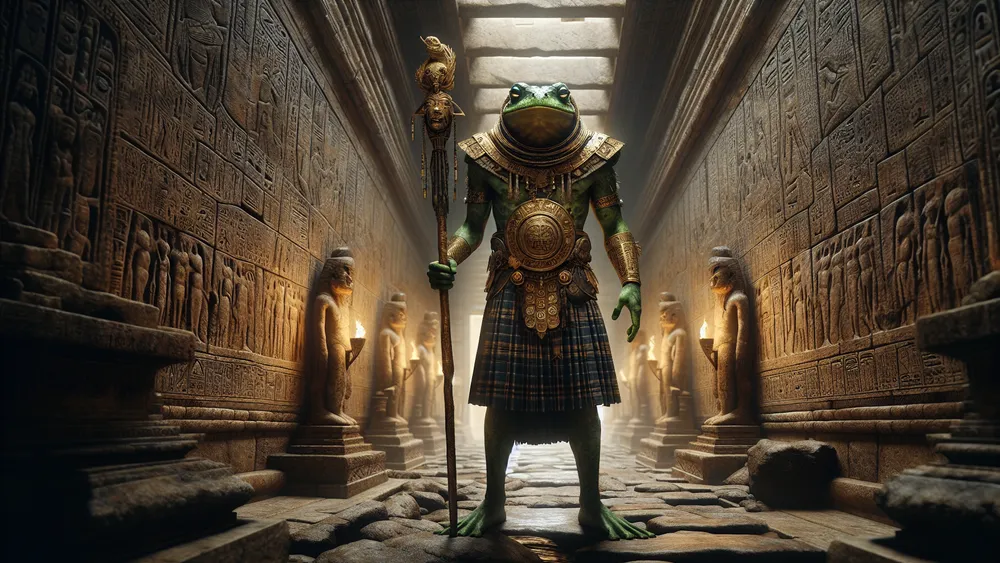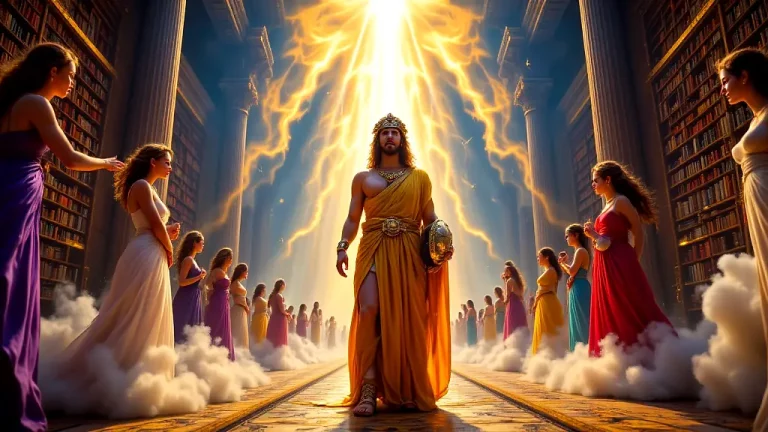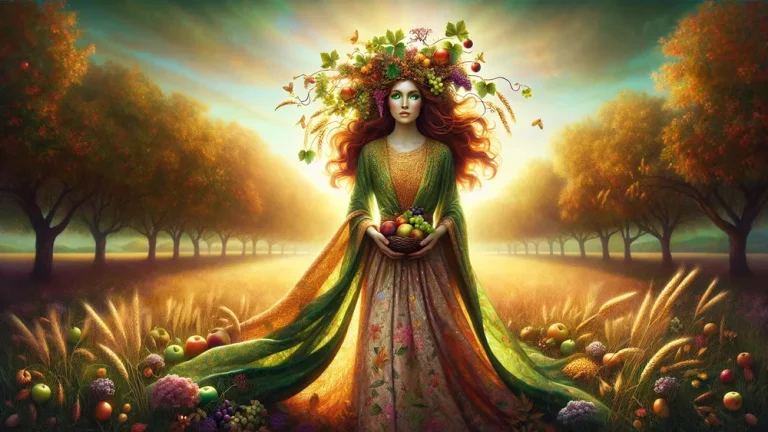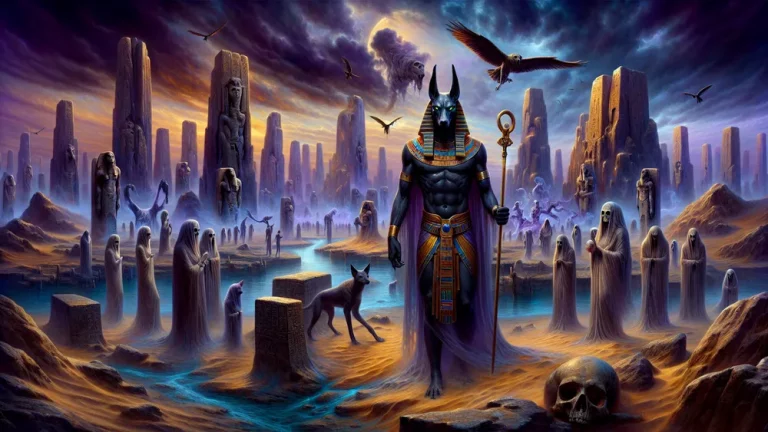Kek: Ancient Egyptian Symbol Of Darkness
In the big and complex fabric of old Egyptian stories, few gods get the fascination like Kek, the mysterious sign of darkness. Think about the still and quiet of night before the first light shows up – this is the world of Kek.
Key Points:
- Kek, an ancient Egyptian deity, symbolizes darkness and chaos in Egyptian mythology.
- Kek is part of the Ogdoad, a group of eight gods representing the original elements of the universe.
- Kek and his female counterpart, Kauket, represent the male and female aspects of darkness and disorder.
- Kek is often symbolized with frogs and serpents, representing change and mystery.
- In modern times, Kek has resurfaced in internet culture and memes, but has been misused by some groups.
- Academics are studying the resurgence of Kek and its social and political implications.
- Kek’s significance lies in his portrayal of primordial darkness and chaos in Egyptian creation myths.
As you read this blog post, you will find out the beginnings and importance of Kek in the group of gods, his part with his female counterpart Kauket, and how these gods of darkness helped make stories. You will also see Kek’s connections with frogs and serpents, and how his image has changed in today’s world, from internet memes to using them wrong.
By the end, you’ll have a full understanding of Kek’s place in both old and current situations.
Kek: Overview and Key Facts
| Key Point | Description |
|---|---|
| Name | Kek (also spelled Keku) |
| Symbolism | Shows original darkness and disorder |
| Gender | Male (Kek) and Female (Kauket) |
| Role in Mythology | Part of the Ogdoad, a group of eight gods showing original elements |
| Consort | Kauket (female other half) |
| Attributes | Often shown with frog and serpent signs |
| Cultural Significance | Shows the idea of darkness before making |
| Modern Importance | Came back in internet culture and memes |
| Misappropriation | Used by alt-right and fringe groups in modern times |
| Academic Interest | Studied by academic analysis about old and modern views |
Where Kek Comes From in Mythology
To really get Kek’s importance, we need to look at his beginnings in old Egyptian myths. Let’s see how Kek and Kauket fit into the big story of the universe.
The Ogdoad and How the World Started
In old Egyptian stories, the Ogdoad is an interesting group of eight gods that show the original parts the world was made from. Think of these gods as a team of basic things working together to make everything. The Ogdoad has four male-female pairs, each showing a different part of the original disorder. Kek and his female other half, Kauket, show the idea of darkness and unclear things. Their parts in the stories of how it all began are important because they stand for the dark, empty space before light and order showed up. The Ogdoad includes:
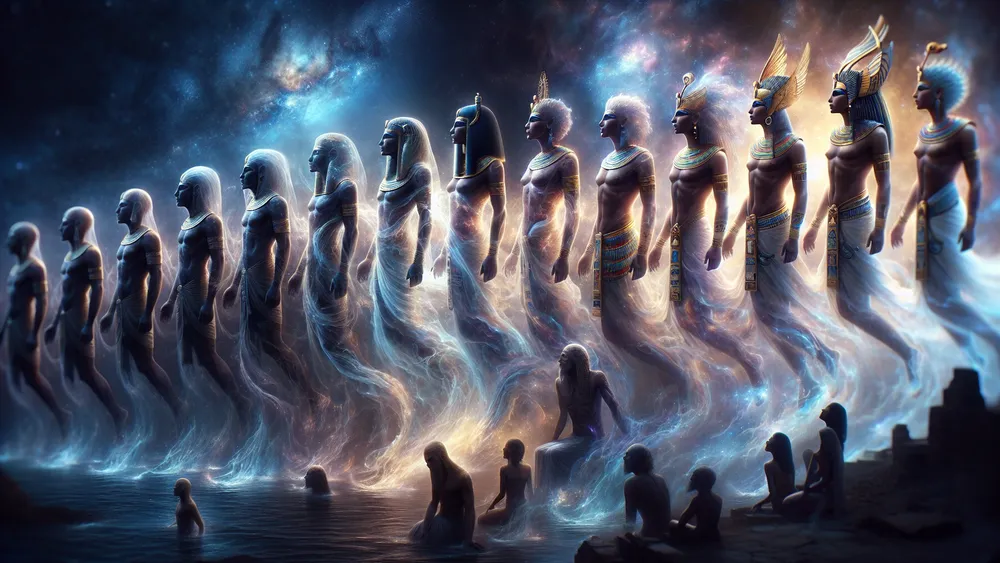
- Nun and Naunet: Showing the original waters.
- Heh and Hauhet: Showing infinity and no limits.
- Kek and Kauket: Showing darkness and unclear things.
- Amon and Amaunet: Showing hiddenness and invisibility.
Together, these gods show the old Egyptians’ view of the universe’s beginnings, with Kek and Kauket playing big parts in the change from disorder to order.
Kek and Kauket represent darkness and unclearness in the Egyptian creation stories, symbolizing the transition from chaos to order.
Kek and Kauket: Dual Faces of Darkness
Kek and Kauket, as male and female partners, show the two sides of darkness and unclear things in old Egyptian stories. Think of them like two parts of darkness, one side and the other side, they make a full picture of the original empty space. Their parts are important in keeping the stability between light and darkness in the big universe story.
Kek shows the male side of darkness while Kauket shows the female side, together they make sure the change from disorder to order is smooth. This stability is needed for the steadiness of everything because the Egyptians thought both light and darkness were needed for making and being real. The two sides of Kek and Kauket can be shown like this:
- Kek: Male side of darkness, shows the chaotic and unclear parts of the original empty space.
- Kauket: Female side of darkness, shows the caring and covering features of the original empty space.
By working together, Kek and Kauket make sure that darkness is not just no light but a necessary, changing force in everything.
What Kek Stands For and What He Can Do
Since we have looked at Kek’s beginnings and his two sides with Kauket, let’s check out what Kek stands for and the things he can do in old Egyptian stories.
The Embodiment of Ancient Darkness
Kek shows the idea of original darkness and mess in old Egyptian stories, showing the empty space that was there before the world was made. Think of Kek as night time that comes before light, a needed thing before light and order come out. In old Egyptian way of life, darkness was not just no light but a strong and needed force. It showed the unknown, the mysterious, and the chance for making new things. Kek’s features reflect these things, making him a big part of the story. The meaning of darkness in old Egyptian way of life can be put in short as:

- Original Mess: Darkness was the messy state before the world was made, a needed spot for order to come out.
- Mystery and Chance: Darkness showed the unknown and the chance for new starts.
- Steadiness: Darkness was seen as the other side to light, needed for keeping cosmic steadiness.
By showing these features, Kek plays a big part in the old Egyptian view of the world, showing the importance of darkness as a changing and making force.
Kek’s Spot in Egyptian Mythology
Kek holds a vital place in the bigger Egyptian universe setup, mainly as a god showing first darkness and mess. His role is very important for the switch from the messy, empty space to the fixed universe. In the Ogdoad group, Kek is one of the basic gods who show the needed parts of making.
Think of him like a key player in a team, where each person has a job that makes the group succeed. Kek’s presence keeps the balance between mess and order, which is needed for the steadiness of the cosmos.
Kek’s dealings with other gods show his importance. He works closely with his female partner, Kauket, to show the two sides of darkness. Also, his impact reaches both the natural and worlds beyond normal, changing everything from the cycles of night and day to the deeper, very important parts of being real. The following table compares Kek’s features with those of other gods in the Ogdoad, showing his special role in this group:
| Deity Pair | Male Deity | Female Deity | Represented Element |
|---|---|---|---|
| Nun and Naunet | Nun | Naunet | First Waters |
| Heh and Hauhet | Heh | Hauhet | Infinity and No Limits |
| Kek and Kauket | Kek | Kauket | Darkness and Unclear |
| Amon and Amaunet | Amon | Amaunet | Hidden and Invisible |
By seeing how Kek helps keep this setup, we can understand his role in keeping the delicate steadiness that supports the old Egyptian view of the world.

What Frogs and Snakes Mean for Kek
In old Egyptian stories, the frog and snake are strong signs often linked with Kek, each having important meanings that connect to his powers and features. The frog, as an example, is a sign of change and life-giving, showing life coming out from the first waters of mess, just like how Kek stands for the chance to make things in darkness.
On the flip side, the snake shows secret strength and the repeating time, showing the mysterious and often feared parts of the unknown. These signs are not just random matches but are deeply mixed with Kek’s role as a god of darkness and mess. To help you understand better, here’s a quick list of what they mean:

- Frog: Shows change, life-giving, and life coming out of mess.
- Snake: Means secret strength, mystery, and repeating time.
By showing these signs, Kek’s features are even more clear, highlighting his impact over the changing and mysterious forces that control both the natural world and worlds beyond.
Kek’s association with the frog symbolizes change and life, while the snake signifies secret strength and mystery, reflecting his influence over transformative and enigmatic forces.
How Kek’s Still Around Today
Looking at Kek’s old meaning and signs, now we see how this mysterious god has stayed present in today’s life and in current talk.
Kek in Today’s Culture and Online Stuff
In recent years, Kek has seen a surprising comeback in today’s way of life, especially in internet jokes and online groups. This old god of darkness has turned into a sign in digital stuff, often shown as a joke with a frog head. For instance, the “Pepe the Frog” joke, which became very popular, linked to Kek, showing chaos and uncertainty in online talk. This move from an old Egyptian god to a today’s internet icon shows how old signs can be used again and seen differently as time goes on. To help you see better, here’s a quick look at Kek’s place in today’s culture:
- Internet Memes: Kek often appears with the “Pepe the Frog” meme, showing chaos and uncertainty.
- Online Groups: Many online groups use Kek as a sign, reflecting his old features in a today’s set-up.
By looking at Kek’s path from old stories to today’s digital culture, we see how old signs keep impacting and shaping the stories we tell now.
The Alt-Right and How They’ve Used Kek
In recent years, the alt-right and some fringe groups have wrongly used Kek, changing him from an old Egyptian god into a sign for their wild ideas. They took him over, used Kek as a figure for mess and trouble, often connected to the “Pepe the Frog” joke, which got used again to spread hot and wild messages.
These effects of this wrong use are big, since they have changed the public view of Kek, linking him more with today’s political and social movements rather than his old stories. To help you understand better, here’s a quick look at the wrong use and its impacts:
- Wrong Use by Alt-Right: Kek has been used as a sign for mess and trouble by the alt-right.
- Impact on Public View: This has led to a change in how Kek is seen, from an old god to a today’s political sign.
By looking at this change, we can see how the wrong use of old signs can twist their original meanings and change today’s stories.
What Academics Say About Kek Now
Scholars got interested in the comeback of Kek, looking at how an old Egyptian god has become popular again in today’s online world. They have checked out this thing through many angles, seeing the social and political effects of Kek’s change. For instance, some experts look at the new use of Kek and think about how other old signs have been taken to fit today’s plans. To help you understand better, here’s a quick look at academic ideas:
- Comeback Study: Scholars study the new interest in Kek, looking at its social and political effects.
- Today’s Importance: They see Kek’s today’s importance, looking at how other old signs are reused now.
By deeply looking at these academic ideas, we understand better how old signs like Kek keep influencing and shaping today’s stories.

Pantheon of Egyptian Gods
The group of Egyptian gods is big and detailed, having many gods each with their own different features and jobs. From well-known gods like Ra, the sun god, to not so famous ones, this group shows the rich and detailed religious ideas of old Egypt.
To explore a full list of all the Egyptian gods, you can look at the long descriptions and stories that show their importance in Egyptian mythology. This large group is like a big family, each god and goddess having a special job to keep the order of the universe.
FAQs
1. What Is the Significance of Kek in Egyptian Mythology?
The significance of Kek in Egyptian mythology lies in his representation of primordial darkness and chaos, essential elements in the creation myths.
2. How Did Kek and Kauket Work Together in the Creation Myths?
Kek and Kauket worked together in the creation myths by embodying the primordial darkness that existed before the formation of the world.
3. Can You Explain the Modern Cultural Phenomenon Associated with Kek?
The modern cultural phenomenon associated with Kek involves his transformation into a symbol within internet memes and online communities, particularly as a figure of humor and satire.
4. How Has the Image of Kek Been Altered in Contemporary Times?
The image of Kek has been altered in contemporary times by being co-opted as a symbol in internet culture and political movements, jumprging from its original mythological context.

